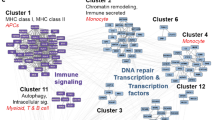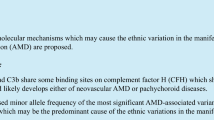Abstract
Recent several meta-analyses and certain case–control studies suggested that the Ras-like without CAAX 2 (RIT2) rs12456492 increased the risk of Parkinson’s disease (PD) in Asian and Caucasian populations. However, as so far, the association between RIT2 rs12456492 and PD is still controversial. We investigated genetic association of RIT2 rs12456492 with PD susceptibility in a Han Chinese population of 1747 ethnic Han Chinese subjects comprising 884 PD patients and 863 healthy controls. The minor allele frequency (MAF) of G at the RIT2 rs12456492 was not significantly different between the cases and the controls. Furthermore, no significant differences were observed in genotype distribution between PD patients and healthy controls for the RIT2 rs12456492, even after being stratified by age at onset and gender. In addition, we found that no significant differences were detected in the clinical manifestations for gender, age at onset, and onset symptoms between PD patients with AG + GG genotypes and those with AA genotypes. Our study from the mainland China demonstrates that RIT2 rs12456492 do not increase the risk of developing PD. Therefore, more replication studies in additional Chinese population and other cohorts are warranted to further clarify the role of RIT2 rs12456492 in PD susceptibility.
Similar content being viewed by others
References
Kim SR, Hui YS, Choi E et al (2014) Influencing effect of non-motor symptom clusters on quality of life in Parkinson’s disease. J Neurol Sci 347(1–2):310–315
Song W, Guo X, Chen K et al (2013) The impact of non-motor symptoms on the health-related quality of life of Parkinson’s disease patients from Southwest China. Park Relat Disord 20(2):149–152
Nussbaum RL, Ellis CE (2003) Alzheimer’s disease and Parkinson’s disease. N Engl J Med 348(14):1356–1364
Tsuboi Y (2012) Environmental-genetic interactions in the pathogenesis of Parkinson’s disease. Exp Neurobiol 21(3):123–128
Tsuboi Y (2012) Environmental-genetic interactions in the pathogenesis of Parkinson’s disease. Exp Neurobiol 21(3):123–128
Verstraeten A, Theuns J, Broeckhoven CV (2015) Progress in unraveling the genetic etiology of Parkinson disease in a genomic era. Trends Genet 31(3):140–149
Nathan P, Beecham GW, Destefano AL et al (2012) Meta-analysis of Parkinson’s disease: identification of a novel locus, RIT2. J Org Chem 71(3):370–384
Zhang X, Niu M, Hong L et al (2015) RIT2 rs12456492 polymorphism and the risk of Parkinson’s disease: a meta-analysis. Neurosci Lett 602:167–171
Lu Y et al (2015) Genetic association of RIT2 rs12456492 polymorphism and Parkinson's disease susceptibility in Asian populations: a meta-analysis. Sci Rep 5:13805. doi:10.1038/srep13805
Nalls MA et al (2014) Large-scale meta-analysis of genome-wide association data identifies six new risk loci for Parkinson’s disease. Nat Genet 46(9):989+
Lin CH, Chen ML, Yu CY et al (2013) RIT2 variant is not associated with Parkinson’s disease in a Taiwanese population. Neurobiol Aging 34(9):2236.e1–2236.e3
Hughes AJ, Daniel SE, Kilford L et al (1992) Accuracy of clinical-diagnosis of idiopathic Parkinon’s disease—a clinicopathological study of 100 cases. J Neurol Neurosurg Psychiatry 55(3):181–184
Emamalizadeh B, Movafagh A, Akbari M et al (2014) RIT2, a susceptibility gene for Parkinson’s disease in Iranian population. Neurobiol Aging 35(12):27–28
Emamalizadeh B, Jamshidi J, Movafagh A et al (2016) RIT2 polymorphisms: is there a differential association? Mol Neurobiol. doi:10.1007/s12035-016-9815-4
Liu ZH, Guo JF, Wang YQ et al (2014) Assessment of RIT2 rs12456492 association with Parkinson’s disease in Mainland China. Neurobiol Aging 36(3):1600.e9–1600.e11
Nie K, Feng SJ, Tang HM et al (2014) RIT2 polymorphism is associated with Parkinson’s disease in a Han Chinese population. Neurobiol Aging 36(3):1603.e15–1603.e17
Wang JY, Gong MY, Ye YL et al (2015) The RIT2 and STX1B polymorphisms are associated with Parkinson’s disease. Park Relat Disord 21(3):300–302
Pihlstrøm L, Axelsson G, Bjørnarå KA et al (2013) Supportive evidence for 11 loci from genome-wide association studies in Parkinson’s disease. Neurobiol Aging 34(6):1708.e7–1708.e13
Zhang L, Wahlin K, Li Y et al (2013) RIT2, a neuron-specific small guanosine triphosphatase, is expressed in retinal neuronal cells and its promoter is modulated by the POU4 transcription factors. Mol Vis 19(12):1371–1386
Spillantini MG, Goedert M, Crowther RA et al (1997) Familial multiple system tauopathy with presenile dementia: a disease with abundant neuronal and glial tau filaments. Proc Natl Acad Sci USA 94(8):4113–4118
Lee CH, Della NG, Chew CE et al (1996) Rin, a neuron-specific and calmodulin-binding small G-protein, and Rit define a novel subfamily of ras proteins. J Neurosci Off J Soc Neurosci 16(21):16–6784
Lee D, Lee SY, Lee EN et al (2002) α-Synuclein exhibits competitive interaction between calmodulin and synthetic membranes. J Neurochem 82(5):1007–1017
Padilla R, Maccioni RB, Avila J (1990) Calmodulin binds to a tubulin binding site of the microtubule-associated protein tau. Mol Cell Biochem 97(1):35–41
Yang W, Xinshu X, Jianming Z et al (2009) A complex network of factors with overlapping affinities represses splicing through intronic elements. Commun Comput Inf Sci 276(12):21–26
Geng-Xian S, Jiahuai H, Andres DA (2005) Rin GTPase couples nerve growth factor signaling to p38 and b-Raf/ERK pathways to promote neuronal differentiation. Mol Hum Reprod 280(45):215–223
Glessner JT, Reilly MP, Kim CE et al (2010) Strong synaptic transmission impact by copy number variations in schizophrenia. Proc Natl Acad Sci USA 107(23):10584–10589
Bossers K, Meerhoff G, Balesar R et al (2009) Analysis of gene expression in Parkinson’s disease: possible involvement of neurotrophic support and axon guidance in dopaminergic cell death. Brain Pathol 19(1):91–107
Acknowledgements
The study was supported by West China Hospital of Sichuan University, and Science and Technology Department of Sichuan Province (Number 2013SZ0003). We gratefully acknowledge Prof. Dong Zhou, Li He, Guanggu Yuan, and Yingru Gou. We would also like to thank Xueli Chang, Xueye Mao, Dongmei Zhao, Jinhong Zhang, and Qiao Liao for their help.
Author information
Authors and Affiliations
Corresponding author
Ethics declarations
Conflict of interest
Nothing to declare.
Additional information
Jun-Ying Li and Jin-hong Zhang contributed equally to this study.
Rights and permissions
About this article
Cite this article
Li, JY., Zhang, Jh., Li, NN. et al. Genetic association study between RIT2 and Parkinson’s disease in a Han Chinese population. Neurol Sci 38, 343–347 (2017). https://doi.org/10.1007/s10072-016-2784-6
Received:
Accepted:
Published:
Issue Date:
DOI: https://doi.org/10.1007/s10072-016-2784-6




